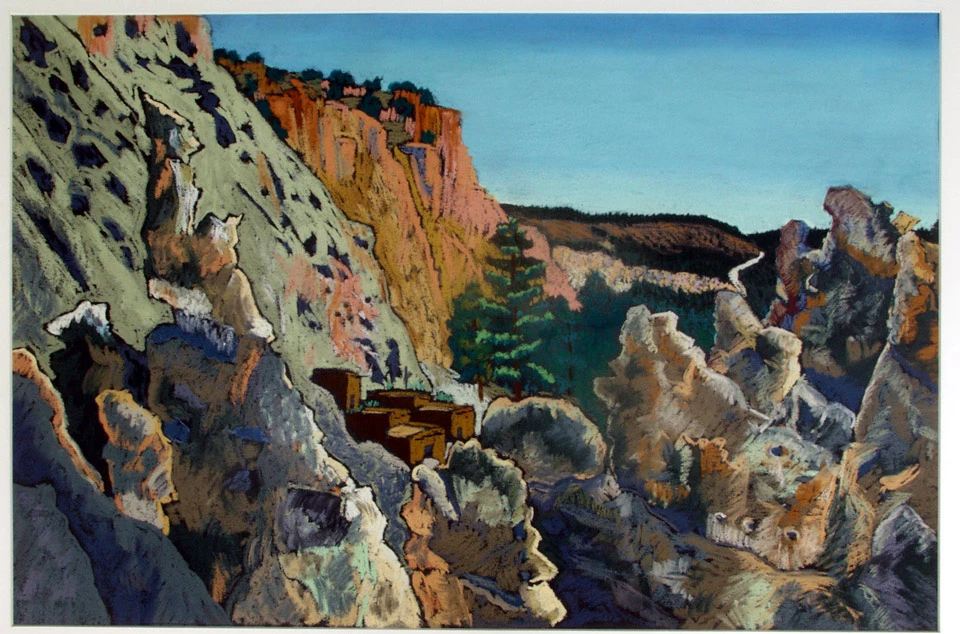- Cultural Landscape: Frijoles Canyon
- Park: Bandelier National Monument, New Mexico
- Period of Significance: 1150 - 1976
- Featured Artwork: View of Talus House, Helmut Naumer, Sr., 1935-36
- Bandelier National Monument CCC NHL Historic District Cultural Landscape Report
- Intermountain Region Poster
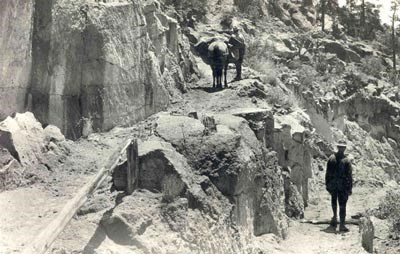
Photo by E. S. Ship, courtesy of U.S. Forest Service #14300/193781
Frijoles Canyon is located in north central New Mexico within Bandelier National Monument. The complex cultural landscape tells a many-layered story, extending over the course of many years and including a collection of prehistoric and historic features, a perennial stream, and a variety of plant communities within the narrow canyon.
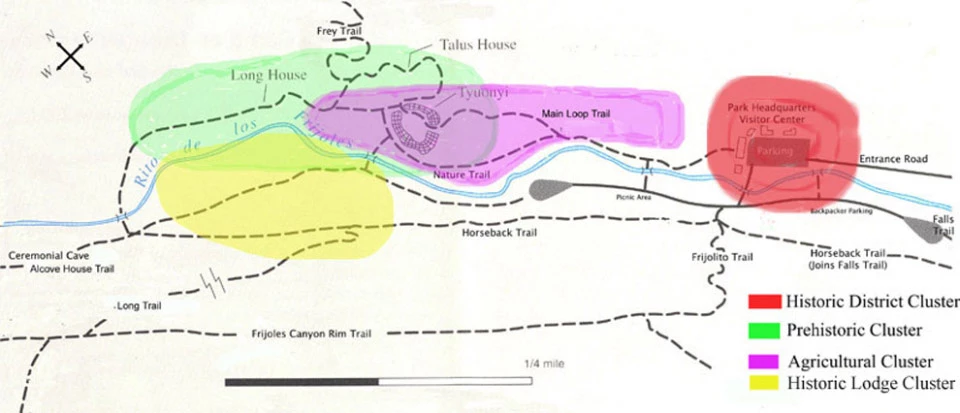
NPS (Adapted for CLI report from National Geographic/Trails Illustrated Map 209, 2000)
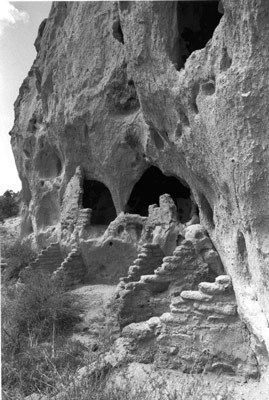
NPS/LCS files (BAND 08019)
With so many periods of use, the landscape of Frijoles Canyon has experienced changes over time that include ownership, use, vegetation, viewsheds, climate, noise, and physical structures. Each transformation helps to tell its story.
The canyon's significant historic periods include:
- Ancestral Pueblo homeland (1150-1600)
- Grazing and farming site for Hispano and Pueblo land users (1600-1900)
- Popular location for scientists and tourists (1880-2006)
The Bandelier Civilian Conservation Corps (CCC) Historic District became a National Historic Landmark in 1987. The District is composed primarily of the CCC-era complex that forms the administrative, residential, and maintenance complex for the park. It is a sub-component of the Frijoles Canyon component landscape, which extends into the canyon to include the range of prehistoric and historic sites that have been used through time.
Although little remains from the historic guest lodge and the Hispano grazing and farming eras, the Frijoles Canyon landscape still contains archeological sites related to the Ancestral Pueblo, most of the CCC-era resources, and many of the historic vegetation patterns.
Helmut Naumer, Sr.
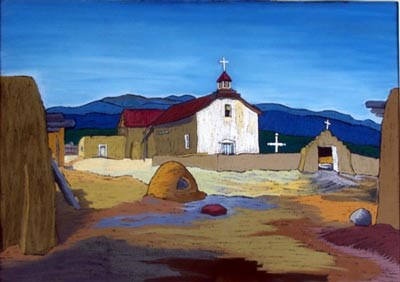
Helmut Naumer, Sr., 1935-36, Bandelier National Monument, BAND 1410
In the early 1930s, Bandelier National Monument commissioned several artists to complete paintings of the Bandelier landscape as part of the Works Progress Administration's art program. German-born painter Helmut Naumer was one of those who contributed an artistic perspective to the interpretation of this landscape.
In addition toView of Talus House, which depicts a restored Puebloan cliff dwelling in Frijoles Canyon, Naumer painted several other views of Bandelier National Monument.
Picuris Pueblo shows a church at Picuris, a Tiwi-speaking pueblo in the foothills of the Sangre de Cristo Mountains south of Taos.
A component landscape is a definable physical area within the boundaries of a cultural landscape that is listed on, or eligible for listing on, the National Register of Historic Places. It contributes to the significance of its parent landscape, and it may also be individually significant. The component landscape warrants individual documentation to adequately record its physical character of assemblage of related features.
Last updated: June 28, 2018

